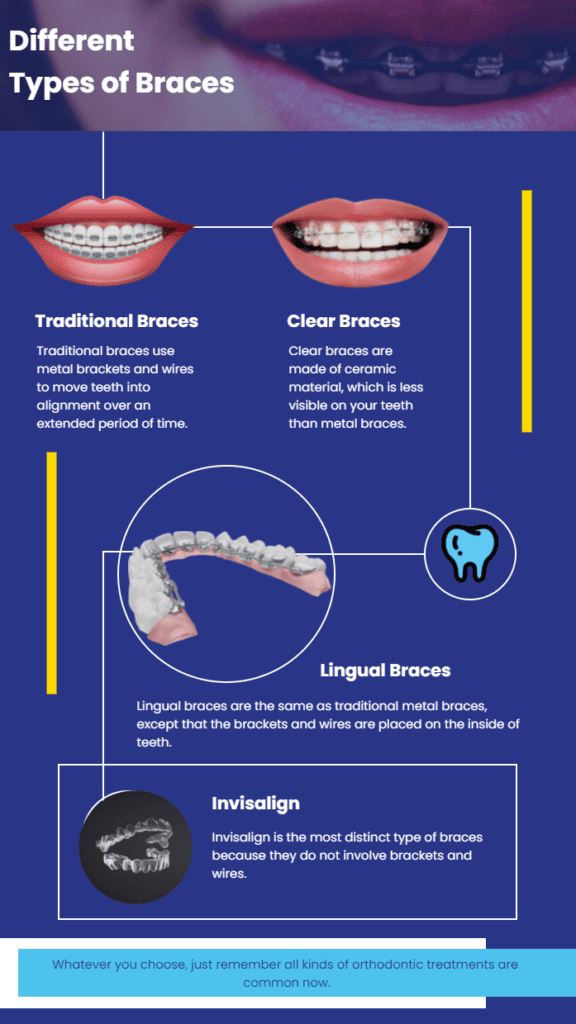Leading Tips for Picking the most effective Cumming Orthodontist for Braces and Aligners
Leading Tips for Picking the most effective Cumming Orthodontist for Braces and Aligners
Blog Article
Comprehensive Overview to Orthodontics Treatments for Dealing With Oral Imbalances
Understanding the complexities of each procedure, including their mechanisms, advantages, and possible drawbacks, is vital in making informed choices regarding one's orthodontic therapy. As we browse with the extensive guide to orthodontic procedures for correcting oral misalignments, the detailed information of each method will certainly unfold, shedding light on the course towards a functional and unified oral alignment.
Orthodontic Procedures Overview

Along with clear aligners and traditional dental braces, orthodontists may additionally recommend other interventions like headgear, palatal expanders, or retainers to deal with specific placement concerns (cumming invisalign). These procedures are tailored to every individual's one-of-a-kind requirements and may involve a combination of therapies to attain the desired results. Normal changes and tracking are vital components of orthodontic treatment to ensure progression is on track and to make any needed modifications along the way. By undertaking orthodontic treatments, patients can not only achieve a straighter smile but also enhance their general dental health and function.
Standard Braces: Exactly How They Work
When considering orthodontic therapies for oral misalignments, standard dental braces stand out as a reliable method for fixing teeth placing. Conventional braces contain braces, cables, and bands that function together to use continual stress on the teeth, progressively moving them into the desired alignment. The brackets are connected to the teeth making use of a special adhesive, and the cords are threaded via the braces. By changing the stress of the cords, orthodontists can manage the instructions and pressure related to each tooth, directing them into proper placement gradually.
One trick facet of just how conventional dental braces work is the procedure of bone improvement. As pressure is applied to the teeth with the dental braces, the bone surrounding the teeth is reshaped to support the new tooth settings. This makeover is vital for the long-term security of the dealt with alignment. Patients will need routine changes at the orthodontist's workplace to ensure the dental braces proceed to apply the correct pressure for efficient teeth motion.
Unseen Aligners: Pros and Disadvantages
Unnoticeable aligners supply a hassle-free and very discreet option to conventional dental braces for fixing dental misalignments. These clear, tailor-made trays are virtually unnoticeable when put on, making them an appealing choice for individuals looking for a much more cosmetically pleasing orthodontic therapy. One of the primary benefits of invisible aligners is their removability, enabling less complicated upkeep of oral hygiene compared to traditional braces. Patients can remove the aligners before eating or cleaning their teeth, reducing the threat of food getting stuck in the appliance and simplifying the cleaning process.

Surgical Orthodontic Options
Surgical interventions in orthodontics present feasible options for addressing complicated oral misalignments that might not be efficiently dealt with via traditional orthodontic therapies. While standard braces and unnoticeable aligners can remedy many orthodontic concerns, specific situations call for medical intervention to attain optimum results. Surgical orthodontic options are usually suggested for extreme malocclusions, substantial jaw discrepancies, and situations where the underlying bone framework needs alteration to accomplish proper placement.
One typical surgical orthodontic treatment is orthognathic surgery, which includes rearranging the jaws to correct functional issues such as difficulty speaking or eating. This surgical procedure is typically carried out in partnership with an orthodontist that aids align the teeth before and after the procedure. Surgical orthodontics might also include procedures to reveal influenced teeth, remove excess gum tissue, or improve the jawbone to produce an extra unified facial account.
Prior to considering medical orthodontic options, clients undertake an extensive evaluation to determine the requirement and possible laser whitening benefits of such interventions. invisalign. While surgery might appear difficult, it can significantly enhance both the function and visual appeals of the smile in cases where conventional orthodontic therapies drop short
Retainers and Post-Treatment Treatment

Failing to abide with post-treatment care guidelines can result in regression, where the teeth gradually move back towards their original positions. Consistent retainer wear, great oral health, and regular dental examinations are necessary for maintaining the outcomes attained via orthodontic surgery and ensuring the lasting stability of the fixed oral positioning.
Verdict
In verdict, orthodontic treatments supply various alternatives for fixing dental imbalances. Surgical orthodontic choices are available for much more severe imbalances. In general, orthodontic procedures can successfully improve dental wellness and aesthetic look.
As we browse through the extensive guide to orthodontic treatments for correcting oral misalignments, the detailed details of each technique will certainly unfold, dropping light on the course towards a practical and unified dental placement. - cumming orthodontics
One of the most common orthodontic therapies is the usage of dental braces, which are composed of metal braces and cables that use over at this website gentle pressure to gradually shift teeth right into the wanted position.When taking into consideration orthodontic therapies for dental misalignments, traditional dental braces stand out as a time-tested approach for correcting teeth positioning. Furthermore, unseen aligners may not be suitable for complicated orthodontic issues that require even more considerable teeth motion, as they are commonly recommended for mild to moderate cases. Retainers are custom-made orthodontic gadgets designed to hold teeth in their remedied positions after the completion of orthodontic therapy.
Report this page